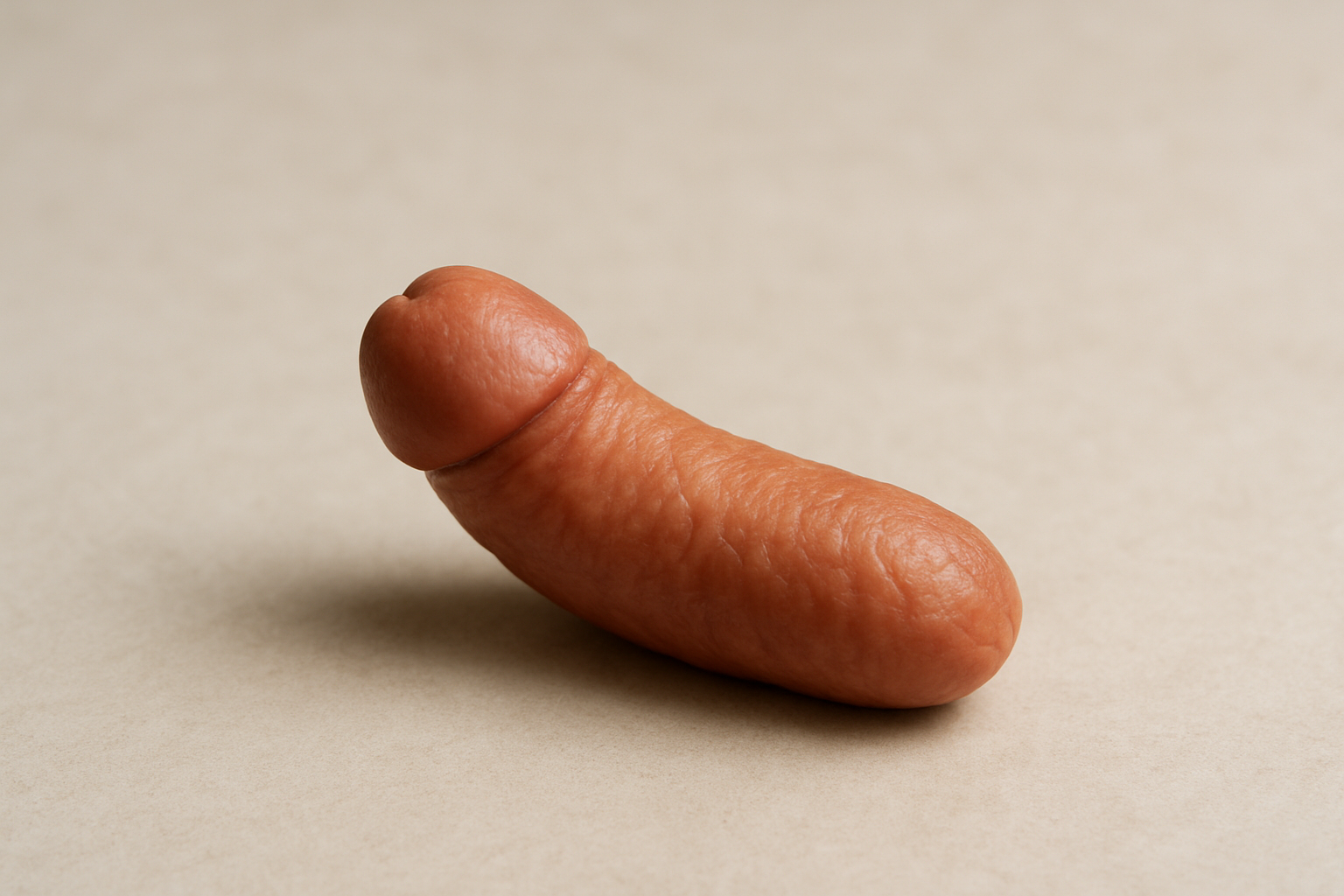Perceptions of the "normal" penis are often skewed by societal and media-driven standards, leading to misconceptions and undue pressure on individuals. Emphasizing the natural diversity in male anatomy is crucial for dispelling myths and fostering acceptance. Education and informed perspectives can alleviate psychological burdens and promote healthier body image and self-esteem.
In today’s society, perceptions of the “normal” penis are often shaped by cultural narratives and media portrayals, which can lead to misconceptions and unrealistic expectations. These societal standards frequently emphasize size and shape, overshadowing the natural diversity that exists in male anatomy. Embracing this diversity is crucial for dispelling myths and fostering a more inclusive understanding of what constitutes a normal penis.
Challenging Societal Norms
The idea of a “normal” penis is largely a social construct, influenced by cultural, historical, and media-driven narratives. These narratives can create unnecessary pressure on individuals to conform to an idealized standard, often leading to issues of self-esteem and body image. It’s important to recognize that penis size and shape vary significantly among individuals, and this variability is completely natural and normal. By challenging these societal norms, we can promote a healthier and more accepting view of male anatomy.
The Psychological Impact of Societal Standards
The pressure to meet societal standards of what is considered a normal penis can have profound psychological effects. Men may experience anxiety, low self-esteem, and body dysmorphia as a result of these unrealistic expectations. It’s essential to adopt an informed perspective that celebrates anatomical diversity, helping to alleviate the psychological burden associated with these societal pressures.
The Importance of Education
Education plays a pivotal role in reshaping perceptions and understanding of male anatomy. By providing accurate information about what constitutes a normal penis, we can empower individuals to appreciate their own bodies and reduce stigma. This blog post aims to offer a comprehensive understanding of the normal penis, supported by medical insights, to foster a more informed and accepting view of male anatomy. Through education, we can dispel myths, reduce anxiety, and promote a more inclusive perspective on what is considered normal.
Understanding the normal penis requires a deeper look into its anatomy and function, highlighting the natural diversity that exists. By exploring these aspects, we can foster a more informed perspective and acceptance of male anatomy.
Anatomy and Function of the Penis
Anatomical Structure
The penis is a complex organ composed of three main parts: the root, the shaft, and the glans. The root anchors the penis within the pelvic region, while the shaft extends outward. The glans, often referred to as the head, is the sensitive tip of the penis. Within the shaft, two corpora cavernosa and one corpus spongiosum are the primary erectile tissues responsible for achieving an erection. These tissues fill with blood during arousal, causing the penis to enlarge and become rigid.
The urethra, a vital component running through the corpus spongiosum, serves a dual function. It is the conduit for urine to exit the body and also plays a crucial role in ejaculation, allowing semen to be expelled during orgasm.
Physiological Function
The penis serves essential roles in both reproduction and urination. During sexual arousal, increased blood flow to the erectile tissues facilitates an erection, enabling sexual intercourse. This process underscores the importance of cardiovascular health, as optimal blood flow is crucial for erectile function.
Urination is another key function, with the urethra acting as a passageway for urine from the bladder to the outside of the body. The dual functionality of the urethra highlights the complex coordination required for the penis to perform its roles effectively.
Size Norms and Variability
Average Size
Discussions about penis size often focus on averages, but it’s essential to acknowledge the wide range of normal sizes. On average, a flaccid penis measures about 3.5 inches, while an erect penis typically ranges from 5 to 5.5 inches. These figures, however, are merely averages, and significant variation exists among individuals.
Genetic factors primarily influence size, but other elements, such as hormonal levels and overall health, can also play a role. It’s crucial to understand that deviations from these averages are entirely normal and should not be a source of concern.
Normal Variations
Variations in size and shape are common and should be embraced as part of the natural diversity of human anatomy. Cultural perceptions often amplify concerns about size, but these are largely unfounded. The functionality of the penis is not determined by its size or shape, and most variations do not impact health or sexual performance.
Understanding and accepting these variations can help alleviate the psychological burden associated with societal expectations, promoting a healthier body image and self-esteem.
Health and Self-Care
Regular Self-Examinations
Regular self-examinations are a proactive way to monitor penile health. By familiarizing oneself with the normal look and feel of the penis, individuals can more easily detect changes or abnormalities that may warrant medical attention. This practice is especially important for identifying conditions like infections or structural anomalies early on.
To conduct an effective self-exam, gently check for lumps, sores, or changes in color or texture. If any unusual findings are observed, consulting a healthcare professional is advisable.
Common Conditions
Several conditions can affect penile health, including infections such as balanitis, which is inflammation of the glans, and structural variations like phimosis or the presence of a foreskin. Circumcision, the surgical removal of the foreskin, is a common procedure that some choose for cultural, religious, or medical reasons.
Maintaining good hygiene and seeking medical advice when necessary are key components of penile health. Regular cleaning and monitoring for signs of infection or discomfort can help prevent common issues and ensure overall well-being.
By understanding the anatomy, function, and variability of the penis, individuals can embrace the natural diversity of male anatomy. This knowledge empowers men to appreciate their bodies, reduce anxiety, and promote a healthier, more inclusive perspective on what constitutes a normal penis.
The perception of a normal penis is often tied to societal narratives, but it’s crucial to focus on the psychological and physical well-being of individuals. The emphasis should be on understanding and accepting the natural diversity rather than adhering to unrealistic standards. Here, we address common concerns and provide practical health advice to support a more informed and accepting perspective.
Addressing Common Concerns
Psychological Impact of Size Perception
Many men experience anxiety and reduced self-esteem due to societal pressures around penis size. These pressures can lead to a distorted body image and, in some cases, body dysmorphic disorder. It’s important to recognize that penis size does not determine one’s worth or ability to lead a fulfilling life. Embracing diversity and understanding that variations in size and shape are normal can significantly improve mental health and self-confidence.
Practical Health Advice
Maintaining penile health involves both physical care and mental well-being. Regular self-examinations can help detect any unusual changes early on, such as lumps or discoloration, which may require medical attention. Good hygiene practices, such as washing with mild soap and water, are essential for preventing infections and maintaining overall health.
Additionally, lifestyle factors like a balanced diet and regular exercise play a crucial role in supporting erectile health. Cardiovascular health is particularly important as it directly affects blood flow, which is essential for erectile function. Avoiding smoking and excessive alcohol consumption can also contribute to better penile health.
Frequently Asked Questions
What is considered a normal penis size?
A normal penis size varies widely among individuals. On average, a flaccid penis measures about 3.5 inches, while an erect penis ranges from 5 to 5.5 inches. It’s important to understand that these averages are just that—averages. Natural variation is normal and should be embraced.
How can I improve my penile health?
Improving penile health involves maintaining good hygiene, performing regular self-examinations, and leading a healthy lifestyle. This includes a balanced diet, regular exercise, and avoiding harmful habits like smoking. Regular check-ups with a healthcare professional can also help monitor and maintain penile health.
When should I see a doctor about my penis?
You should consult a doctor if you notice persistent pain, unusual changes in color or texture, lumps, or signs of infection such as redness or swelling. Early detection and treatment of any issues are crucial for maintaining good health.
Is there a “normal” shape for a penis?
There is no single “normal” shape for a penis. Shapes can vary significantly, and most variations are completely normal. It’s important to focus on the functionality and health of the penis rather than its shape.
How can I deal with anxiety about my penis size?
Dealing with anxiety about penis size involves recognizing that societal standards are often unrealistic and that size does not determine worth. Building confidence through education and acceptance of natural diversity can help. If anxiety persists, seeking support from a healthcare professional or therapist can be beneficial.
By focusing on understanding and accepting the natural diversity of the male anatomy, individuals can foster a healthier perspective on what constitutes a normal penis. This approach not only promotes better mental and physical health but also encourages a more inclusive and accepting view of male anatomy.




